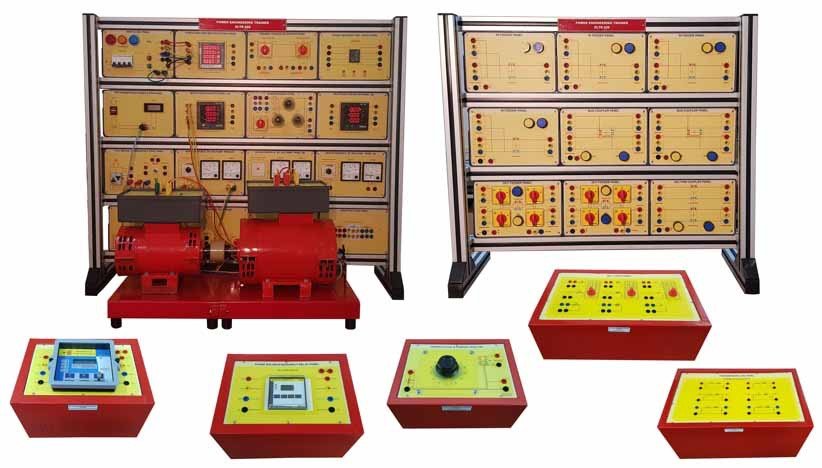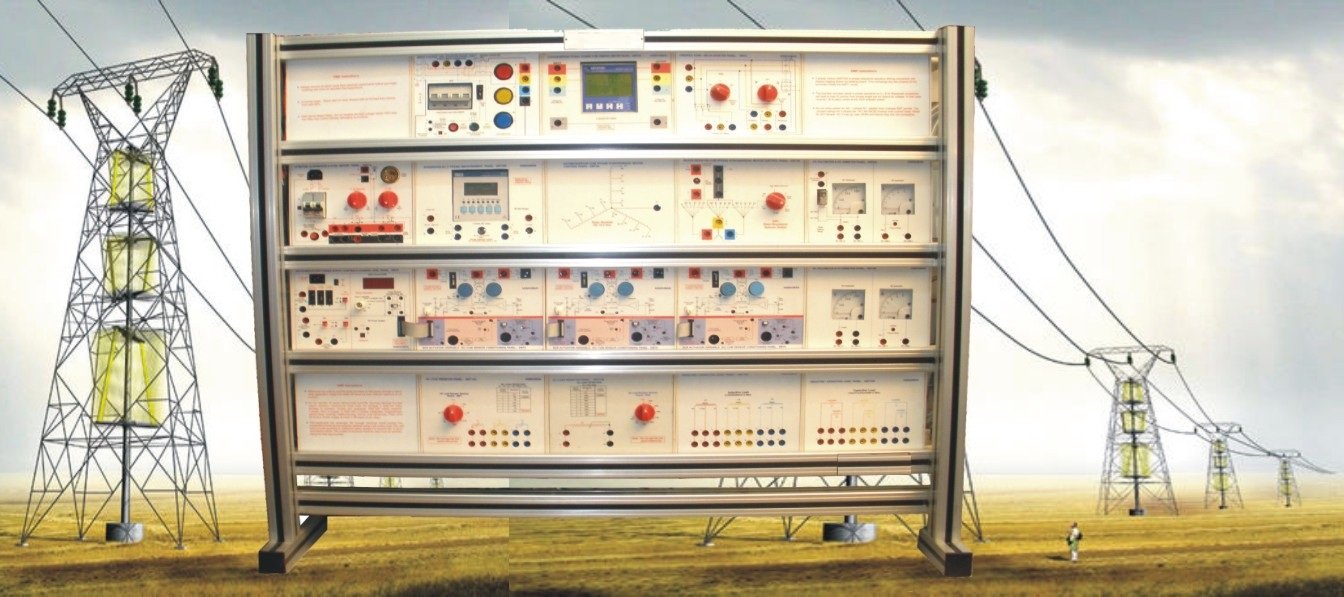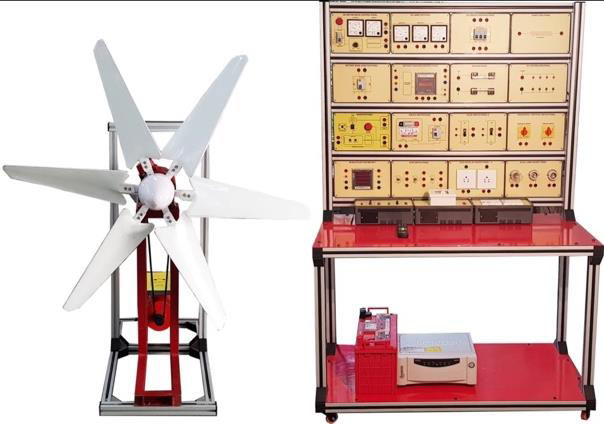Power Distribution Trainer Model ELTR 025B
Electrical power at large switching stations is distributed almost exclusively using double bus-bar systems. These stations incorporate switching matrices for connecting the two bus-bars, the incoming and outgoing feeder cubicles as well as the measurement fields.
SKU:
a4d983ffd184
Categories: Electronics Trainer, Trainers
DOWNLOAD BROCHURE:
ELTR 025B Power Distribution Trainer
The incoming and outgoing feeder cubicles as well as the switching matrices are furnished with circuit breakers and one disconnector for each bus-bar terminal. For safety reasons, a particular switching logic must be strictly adhered to here. The double bus-bar model incorporates all functions of practical relevance. Integrated instruments for measuring currents and voltages permit direct analyses of switching operations.
Double bus-bar systems:
The compact modules named ”Incoming and outgoing feeder cubicles“ and ”Switching matrix“ offer the following advantages:
• Flexible arrangement of the various fields
• Operation and monitoring from a PC
• Networking capability thanks to an RS-485 interface
• Manual operation
• Integrated microcontroller for preventing incorrect operation
• Registration of all characteristic parameters such as current, voltage and switching states
SCADA
Devices are monitored and controlled by means of the SCADA (Supervisory Control and Data Acquisition) system. All devices belonging to Sci-tech„s energy technology program can be arranged as desktop icons and linked together. Measurement values and operating states are indicated. Important parameters and signals can be controlled via the software. Measurement values and operating states can be recorded, displayed as functions of time, and analyzed. Automatic switchover between bus-bars can be performed via the PC.
Three Phase Double Bus-bar System
Includes
- Basic circuits of a three-pole, double bus-bar system
- Three-phase, double bus-bar system with load
- Bus-bar changeover without interruption of the branch
- Preparation of algorithms for various switching operations
- Bus-bar coupling
Overcurrent Protection for Bus-bars
Includes
• Registration of currents in normal operating mode
• Registration of currents in the event of single-, double- or triple-pole short circuit
• Faults outside the protective domain
RELATED PRODUCTS
Automated Sludge Sewage Treatment Plant ENV 004
Rated 0 out of 5
Automotive Dual Steering System AM 181
Rated 0 out of 5
Filterability Index Unit ENV 005
Rated 0 out of 5
Marine Engineering: Water Tunnel ENV 007
Rated 0 out of 5
Wind Power Generation AT005
Rated 0 out of 5













